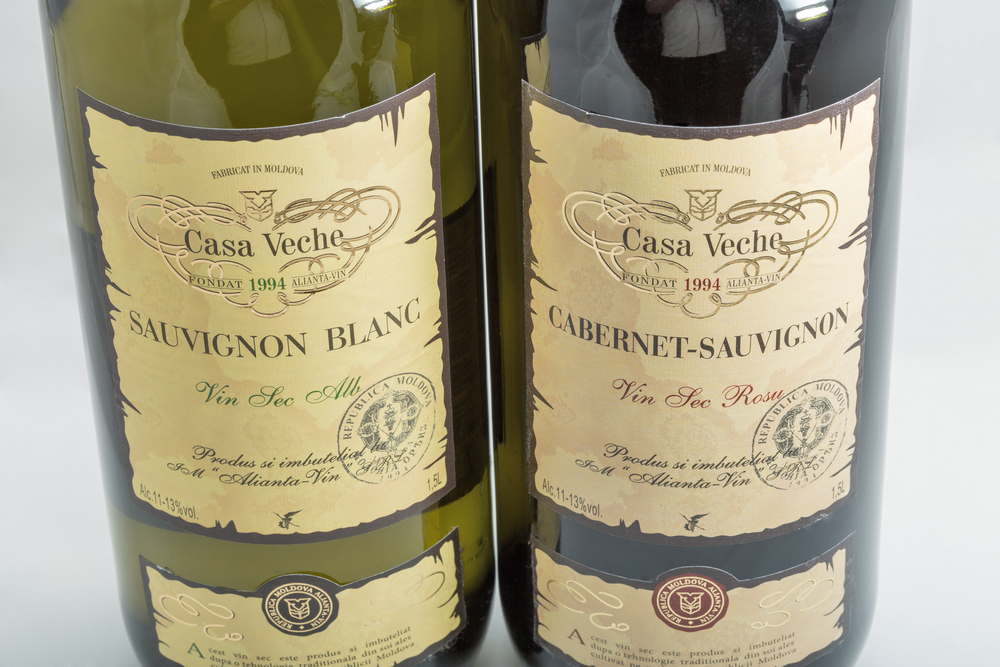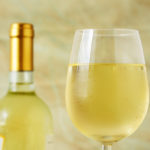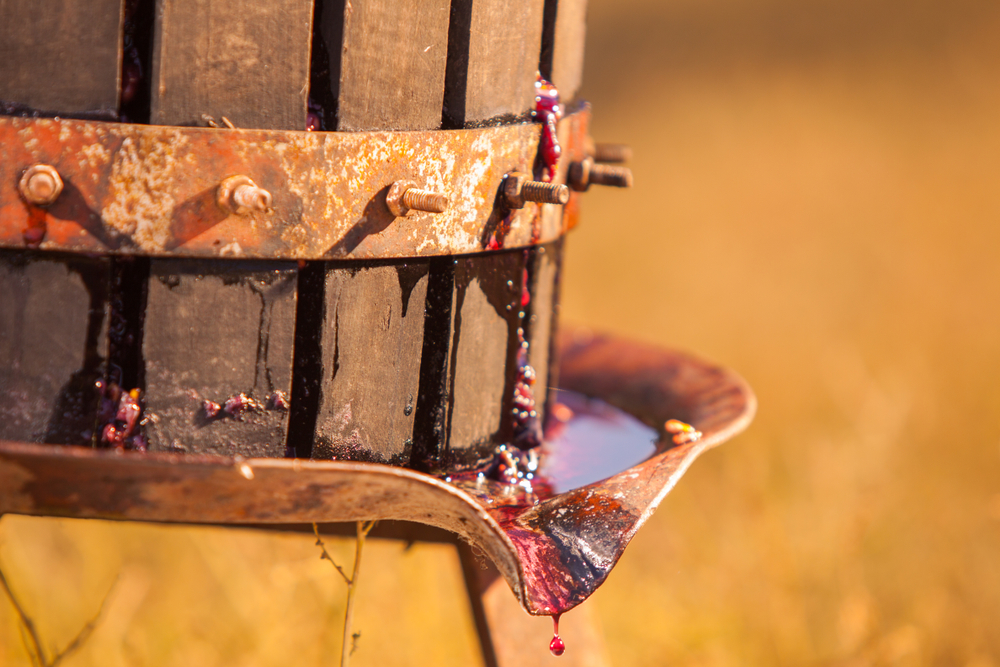Before I knew anything about wine, I was the woman at the bar who asked for an ice cube in my glass of red wine—a definite faux pas in any connoisseur’s mind, no doubt. However, something could also be said about the temperature at which these establishments were serving their wine.
Suppose you bought a bottle of wine that you’re not going to drink right away.
So what are you going to do with it now?
Using a few simple guidelines, you should be able to keep your wines secure until you’re ready to consume or serve them.
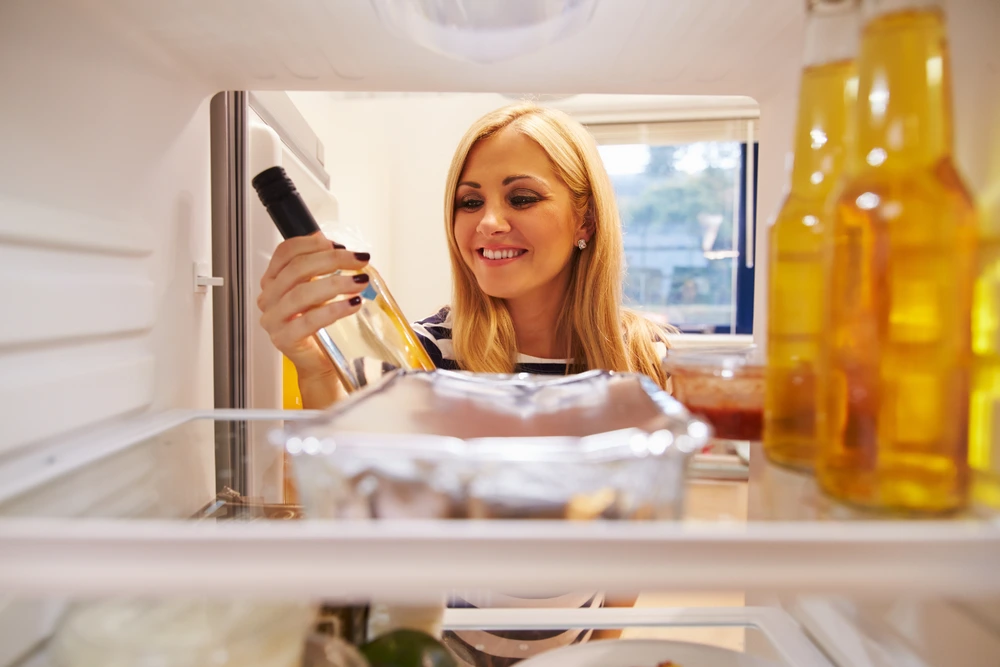
What’s The Best Red Wine Storage Temperature?
The ideal temperature for storing red wine is 55°F, though this isn’t an exact science. A range of 45°F – 65°F is still suitable for red wine storage as long as the temperature is regularly maintained.
The first enemy of wine is heat.
Temperatures above 70° F accelerate the aging of a wine, which is not always ideal. If the temperature rises significantly, your wine may get “cooked,” resulting in dull aromas and flavors.
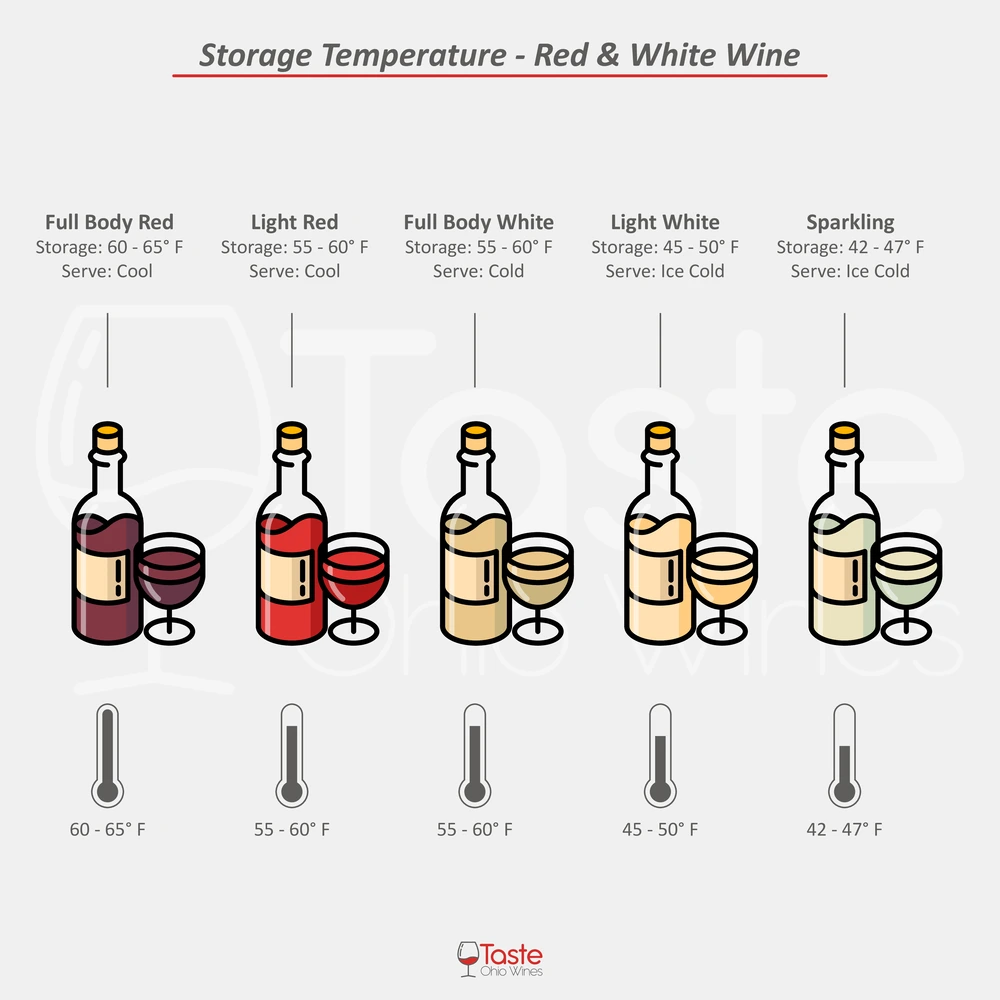
Share this Image On Your Site
What’s The Best White Wine Storage Temperature?
The recommended temperature for storing white wine is also 55°F. But, again, a few degrees cooler or warmer won’t ruin the wine as long as the temperature remains steady.
While certain wines benefit from temperatures of 53 to 54 degrees and others from 56 to 57 degrees, the variation in storage temperature is insignificant.
A lot of people want to preserve their wines for as long as possible, especially champagne (which can go bad). Keeping the storage temperature consistent is key for of any wine, be it red, white, champagne or rosé.
Related: Chilling champagne. And storing Prosecco.
Cooling Too Much
While cooling is not as damaging to wine as heat, if the temperature of the wine is too low, it will freeze and expand.
Too cool of temperatures will force the cork out or break the bottle, enabling oxygen to enter the wine.
It’s alright to store wines in your refrigerator for a few months, but it’s not ideal for the long term.
The average fridge temperature falls much below 45°F, and the absence of moisture could eventually dry up corks, allowing air to seep into the bottles and ruin the wine.
Keep It Consistent and Steady
Successful wine storage involves creating a stable, non-destructive environment that shields the wine from severe and fluctuating temperatures.
A few degrees here and there won’t make a huge difference. Avoiding the risks of sudden or frequent temperature changes is more vital than reaching a precise 55°F.
Recurrent expansion and contraction of the wine inside the bottle may push the cork out or create seepage, in addition to the “cooked” flavors.
However, just because wine has seeped beyond the cork due to heat does not always indicate the wine is damaged. It’s impossible to tell until you open it, and it could still taste great.
Storing wine at the right temperature promotes the chemical reactions you want.
When temperatures are too cold or too hot, molecules slow down, break down, or otherwise alter and fail—wine’s composition changes as a result of its temperature.
If wine reacts to temperature changes regularly, the chemical fabric of the wine is continually shifting and changing. Thus the wine is gradually disintegrating.
That is why the temperature at which wine is stored is crucial.
We’re talking about keeping the character and longevity of your wine. Aim for consistency, but don’t be too concerned about slight temperature changes.
Look to Wine Storage Solutions
Your wine bottles may lose their taste and market worth over time if not stored in a climate-controlled environment.
The following are options for storing your valuable vino:
- A wine rack will suffice if you have a small collection that gets replaced often.
- A wine cooler is a small wine storage unit that maintains temperatures around 50°F – 57°F.
- A wine cabinet or refrigerator is necessary if you wish to keep wine for a long time.
- A wine cellar is a small, cool, damp room in your basement or under a staircase with well-spaced storage.
- An off-site, professional storage facility is a contemporary, well-equipped building dedicated to storing a significant quantity and variety of wines.
Tips for Properly Storing Wine
- Keep the corks moist by storing the bottles horizontally.
- However, if bottle caps are made of metal or plastic, you can store them any way you choose.
- Maintain the proper humidity.
- A humidity level of 50 to 80 percent is deemed safe, and pouring a pan of water in your storage location can help to reach optimal conditions.
- Make sure the amount of light is ideal.
- Direct or excessive light, especially sunlight, is a strict no-no. Vintners use colored glass bottles for various reasons, including the fact that it’s like sunglasses for wine.
- Protect the bottle from vibrations.
- Small motions and sounds will generate vibrations in your wine, affecting the aging process, but unless you live next to a train station, your wine likely won’t be affected. Just don’t go shaking the bottle around like it’s a maraca!
- Shrimp Cocktail (and More) Wine Pairing Guide - 09/06/2022
- What Wine Serving Sizes Look Like: Standard Size and More - 08/06/2022
- How Much Sugar is in Wine: Glass and Bottle Sugar Content - 08/06/2022


